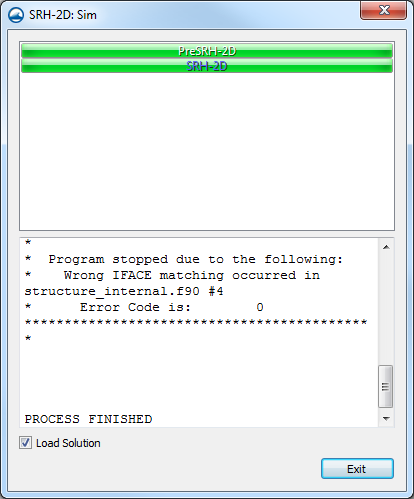We use cookies to make your experience better. To comply with the new e-Privacy directive, we need to ask for your consent to set the cookies. Learn more.
Troubleshooting Errors in SRH-2D
It happens. You‘ve finished building your SRH-2D model in SMS and you launch the model run. Then, to your dismay, SRH-2D stops running and gives you an error.
It’s not fair. You did everything correct and entered all the correct parameters. SRH-2D should be running and giving you its valuable results. But instead you have an error message.
Don’t panic.
While it is discouraging for SRH-2D to not complete when you launch the model run, it is only telling you that a key bit of data is missing for it to give you valid results. The error code will help you locate that data or fix an inconsistency.
But how do you use the error code to find what needs to be fixed? And shouldn’t the SMS model checker have found it before SRH-2D started?
The SMS model checker verifies all the data needed to run SRH-2D is present and looks for errors in the SMS project such as dangling arcs, numbering issues, or missing components. It does not validate the data. Once the SMS model checker has finished, SRH-2D performs its own checks during the model run.

When SRH-2D gives you an error, you’ll need to record the error number. Errors are shown in the model wrapper. Clicking on the Pre-SRH-2D button will show if there are errors during the pre-processor run. Clicking the SRH-2D button will show errors during the model run.
Once you know what the error is, you can look up the list of SRH-2D errors on the XMSwiki here. The article contains a list of known errors along with guidance on how to fix them.
If you were unable to record the error from the model wrapper, don’t worry. You can still see this information by reviewing two of the files generated by SRH-2D during every model run. These files will be named [projectname].OUT.dat and [projectname].DIA.dat files.
To use these files:
- Locate the files in the model run directory with your project file.
- Open the *.OUT.dat or *.DIA.dat files using a text editor such as Notepad.
- Look through the text file to locate the error code.
- Go to the SRH-2D error page to find the solution.
- Make the needed change(s) to your project and run SRH-2D again.
Typical solutions to SRH-2D model run errors might involve adjusting some data inputs or making minor reconfigurations to boundary conditions or structures. While making these changes to a project can sometimes be frustrating and tedious, getting an accurate end result will make it all worthwhile.
This is a great troubleshooting process you can use to create many successful SRH-2D model runs. If you haven’t already made use of SRH-2D, feel free to explore it in the Community Edition of SMS.


